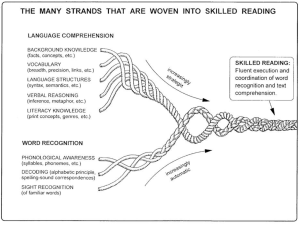Small group instruction has the potential to accelerate learning for students if used with intention and flexibility. In this post, I will summarize small group considerations that were discussed in Heggerty’s Exploring the Power of Small Group Literacy Instruction webinar. The focus of the webinar is on foundational literacy instruction. Heggerty calls these “truths” and aims to dispel “myths” around small group instruction. I call them considerations because teaching is a science and teachers make decisions based on the students in front of them and their understanding of best practices in literacy.
Whole-group instruction is efficient and critical in order for small groups to be effective. Whole group instruction provides grade-level, standards-based universal skills and strategies to all students, maximizing access and teacher time. In whole group instruction, teachers first ensure we are teaching with modeling and gradual release, in a way that is engaging and holds all students to high standards of involvement. Then we develop small groups for very specific skills. Small groups enable teachers to hone in on specific goals for students, based on observation and student work. The webinar describes how 95% of students will become proficient with “sufficient direct whole-group instruction on foundational skills”, 15% may need more support, and about 5% may need intense intervention.
Small group instruction should be flexible. Past practice was to be formulaic in small groups and it is challenging for many of us to make the shift to designing flexibly, based on students’ goals. Some small groups may meet for 10 minutes, four days a week to reinforce a particular phonics skill. Others may meet 15 minutes a day to focus on a specific decoding skill. A fluency group with students who have solidified the phonics goals of a unit, might meet twice a week for ten minutes. Membership in groups varies over time, as students show proficiency in a skill and move to another group.
Small groups will not all look the same. Every small group should be based on specific, targeted goals. The standards, student data, Scope and Sequence, and Reading Rope (also called Scarborough’s Reading Rope) can be used to determine which skills are the priority focuses for each student or group. We use more than universal screening data to design groups, rather we use many data points including student work and observation of skills and transfer of skills. The focus for each group should determine the intensity of time and scaffolding provided.
The Reading Rope, Heggerty:

An important note about The Reading Rope: Learning experiences throughout the day must encompass all strands of the rope, as they are all important in building literacy skills. Small- and whole- group instruction may focus on one component intensively to strengthen skills.
In summary, it is important to make sure that we are designing our time with students with data and students in mind. We, as teachers, are the best resource in the classroom and we maximize our impact with effective direct, whole group instruction on a sequence of skills. Small groups are used with careful planning to accelerate learning so that all students can be successful.
Resources:
Exploring the Power of Small Group Literacy Instruction, Heggerty
The Reading Rope, Heggerty